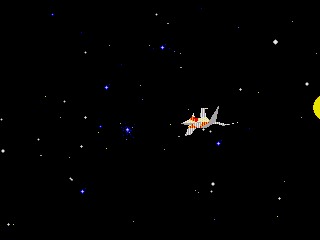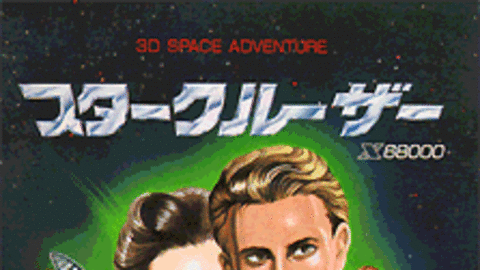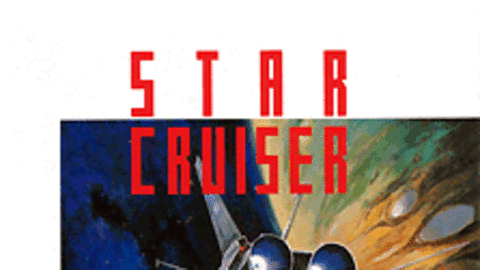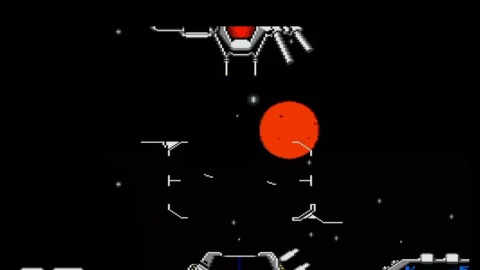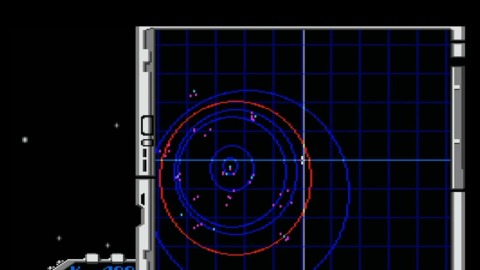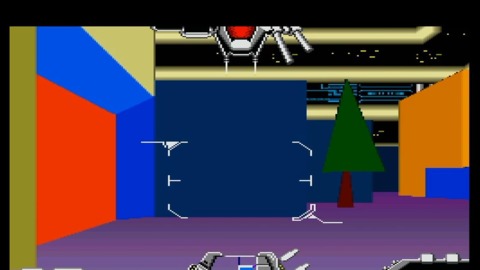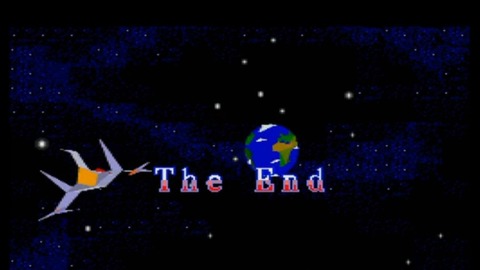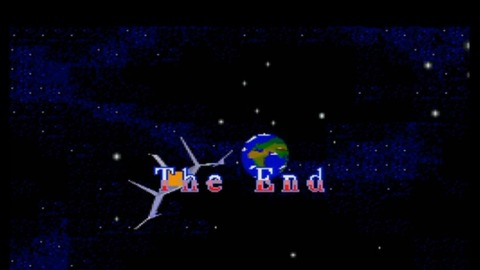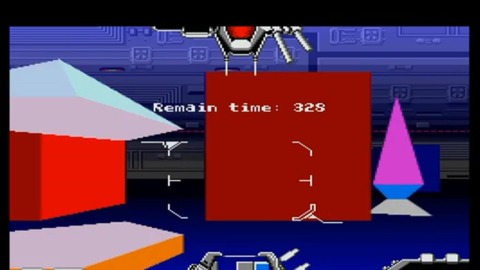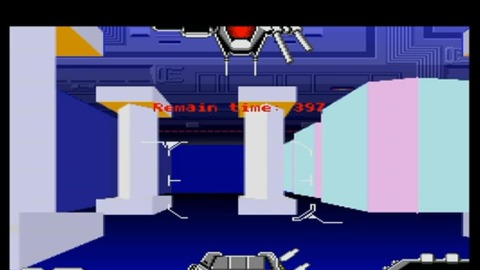Overview
Arsys Software released Star Cruiser (スタークルーザー) for the NEC PC-88, NEC PC-98 and Sharp X1 computers in 1988. Building on its 1986 spiritual predecessor Wibarm, Star Cruiser was an ambitious and innovative game years ahead of its time.
The game's innovations include fully polygonal 3D graphics (including nearly all objects, enemies, and backgrounds, with the exception of pre-rendered distant horizons), true first-person shooter gameplay (anticipating the likes of Wolfenstein 3D and Doom), gameplay mechanics such as strafing, fusion of the first-person shooter and RPG genres (anticipating the likes of System Shock and Deus Ex), 3D open-world sandbox exploration across a large game universe (spanning several star systems) with six degrees of freedom, 3D space flight simulator gameplay for exploring (and fighting enemy spacecraft in) outer space, a crosshair to target enemies (both on ground and in space), and a portable computer built into the player character's power suit that has various uses (such as displaying an automap and radar).
The game also emphasizes storytelling, with an epic sci-fi space opera storyline set in the 27th century, various plot twists, extensive character dialogues with NPCs (who have their own background stories), anime style dialogue portraits for characters, visual novel style POV cutscenes, animated cutscenes rendered using the game's 3D engine, and a chiptune soundtrack composed by Toshiya Yamanaka (later released as a separate original soundtrack CD) using FM synthesis.
The game has a large open-world game universe, allowing the player to explore over 30 planets across four star systems. This makes it the earliest example of a fully 3D open-world game. It also contains the earliest example of a human non-player character (NPC) rendered in 3D polygons.
Releases
The game was ported to the Sharp X68000 computer in 1989. This version is considered the best version of the game, as it took advantage of the powerful X68000's hardware to add a higher display resolution, more detailed character portraits, and the most technically sophisticated 3D polygon graphics seen on a home gaming system of the 1980s.
The version best known outside of Japan is the the Sega Mega Drive (Genesis) console version ported by Masaya in 1990. It was never officially released outside of Japan; however, it was possible to play imported Japanese copies, particularly in the United Kingdom where import copies of the Mega Drive port were available by early 1991.
Namco was planning to localize the game for the Sega Genesis console in North America under the title Star Quest. The October 1993 issue of Electronic Gaming Monthly previewed an early English translation of the game, referring to it as an action RPG that is "light years ahead of the usual games." They noted that "players have been on the lookout for Star Quest for a long time" and that it "was well worth the wait."
The June 1994 issue of Electronic Gaming Monthly reviewed a fully translated English localization by Namco, stating that it was set to be released in the United States in July 1994. A European release was also planned for 1994. However, its release in the Western world was later cancelled.
An unofficial English translaton beta patch for the Genesis version was released in October 2016.
Legacy
The game had a sequel, Star Cruiser II: The Odysseus Project, which was released in 1992 for the PC-9821 and FM Towns computers. In addition to the default first-person shooter combat of the original, the sequel also features an option for menu-based combat.
Among later 3D Japanese computer games it influenced, the 1994 release Geograph Seal for the Sharp X68000 appears to have been influenced by the 3D graphics engine of Star Cruiser. In turn, Geograph Seal was the predecessor of Jumping Flash, the first true 3D platformer.
Star Cruiser was also an influence on the famous game designer Hideki Kamiya (known for Resident Evil, Devil May Cry, Viewtiful Joe, Okami, Bayonetta, Wonderful 101, etc.). In his blog, Kamiya mentioned Star Cruiser as one of his favourite games.
Gameplay
The original computer versions, the Sharp X68000 version in particular, use a unique dual control scheme that anticipated the standard keyboard & mouse controls of the first-person shooter genre, with the direction keys used to move and strafe, while the numpad keys are used to turn around and aim (much like the function of the mouse in later FPS games). However, it is not possible to aim up or down while on foot (much like Doom), but in the outer space segments, the player can aim in all directions with the numpad keys.
Plot
In the 25th century, an inter-galactic war, which began when Earth made first contact with aliens, came to an end with Central Earth emerging the victor. 200 years have since passed. Now in the 27th century, the remains of the Earth Federation is known as the Federation Patrol, which has maintained a fragile balance of power with VOID, a nation under military rule demanding the deportation of the aliens. However, this fragile balance is being jeopardized by VOID's suspicious movements hinting towards a massive strike, with wars igniting across the galaxy.
On Ganymede, a moon orbiting the planet Jupiter, a small battalion is dragged into the conflict and are being trained to fight back VOID. The story begins with the protagonist Brian in a tough training simulation, set up by his friend and comrade, Gibson, and his trusted droid, Freddy. After completing the simulation, they leave the main building and head to the restaurant, where they are given details on what is happening. There they are told that VOID has a base nearby that acts as one of their important strongholds and it is launching out threatening enemies, and Brian is asked to lead a "kamikaze attack" against it.
Awards
Star Cruiser won the following awards from leading Japanese computer publications at the time:

 Genesis
Genesis PC
PC



